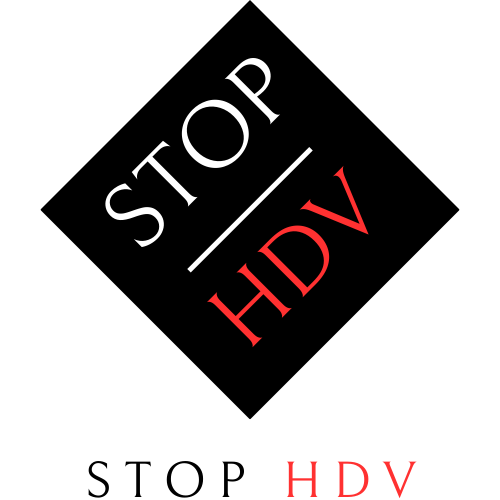In today’s fast-paced world, the art of massage offers an oasis of tranquility and relief. Whether you’re a seasoned therapist or a newcomer to the field, honing your skills through professional massage courses can be rewarding.
This blog post is aimed at exploring the top techniques taught in these courses, which not only enhance your skill set but also elevate your capacity to deliver a therapeutic touch.
Expect to learn about various massages, how they contribute to professional development, and actionable tips to integrate these skills into your practice.
The Importance of Skill Enhancement in Massage Therapy
Why Continuous Learning Matters
Progress in any profession hinges upon the constant evolution of skills. In massage therapy, this is particularly pertinent as new techniques and modalities emerge regularly. Continuous learning not only sharpens your existing skills but opens doors to innovative practices that increase your versatility as a therapist. Courses focused on massage techniques provide a structured environment to explore these advancements, making them indispensable for any committed professional.
Building a Foundation of Knowledge
Before exploring advanced techniques, a solid foundation in basic massage principles is essential. Courses typically start with fundamental theories and practices that cover anatomy, physiology, and the science behind therapeutic touch. This foundational knowledge ensures that all techniques applied are safe and effective, providing a strong base upon which more specialized skills can be developed.
Enhancing Client Satisfaction
At the heart of massage therapy is the client experience. By investing in skill enhancement through professional courses, therapists can tailor their approaches to meet diverse client needs. Enhanced skills lead to improved outcomes, which in turn, boost client satisfaction and retention. A happy client is often a repeat client, leading to sustained success in your practice.
Discovering Therapeutic Touch Techniques
The Power of Swedish Massage
Swedish massage is often the starting point for many massage courses due to its widespread popularity and effectiveness. This technique involves long, gliding strokes that promote relaxation, increase circulation, and ease muscle tension. Learning Swedish massage is beneficial, as it forms the basis for many other massage modalities and is highly sought after by clients seeking relaxation and stress relief.
Key Components of Swedish Massage
- Effleurage: Gentle, sweeping strokes that warm up muscles.
- Petrissage: Kneading that targets deeper muscle layers.
- Friction: Circular movements that improve muscle pliability.
Mastering these components allows therapists to offer a holistic, soothing experience that meets client expectations.
The Art of Deep Tissue Massage
Deep tissue massage is revered for its ability to target chronic muscle tension and provide relief from pain. This technique requires a refined touch, as it involves applying pressure to deeper layers of muscle and fascia. Massage courses teach the nuances of this method, ensuring therapists can apply pressure effectively without causing discomfort.
Techniques Incorporated in Deep Tissue Massage
- Stripping: Slow, deep gliding pressure across muscle fibers.
- Friction: Applied to break down adhesions and improve flexibility.
- Cross-fiber strokes: Used to realign tissue fibers.
These methods, when executed correctly, can significantly enhance therapeutic outcomes for clients suffering from muscle pain and tension.
Exploring Asian Modalities and Their Benefits
The Dynamics of Shiatsu
Originating in Japan, Shiatsu is a technique that emphasizes finger pressure to stimulate the body’s energy pathways or meridians. This method is rooted in traditional Asian medicine and aims to balance energy flow within the body. Incorporating Shiatsu into your repertoire can offer clients a unique experience that promotes holistic well-being.
Core Elements of Shiatsu
- Pressure Points: Targeted application to promote energy flow.
- Stretching: Used to enhance flexibility and energy distribution.
- Breathing Techniques: Integrated to deepen relaxation.
Learning Shiatsu not only broadens your skill set but enriches the therapeutic options available to your clients.
Thai Massage for Flexibility
Thai massage is known for its dynamic and interactive approach, involving stretches, compressions, and rhythmic movements. Often described as assisted yoga, this technique improves flexibility, reduces tension, and increases energy levels. Massage courses provide hands-on learning opportunities to master the flow and rhythm unique to Thai massage.
Essential Techniques of Thai Massage
- Palming and Thumbing: To apply pressure and alleviate tension.
- Yoga-like Stretches: To enhance range of motion and flexibility.
- Rocking Motions: To soothe and relax the body.
Incorporating Thai massage enhances your ability to offer comprehensive care that addresses both physical and energetic imbalances.
Integrating Aromatherapy into Massage Practice
The Science Behind Aromatherapy
Aromatherapy involves the use of essential oils to enhance physical and emotional well-being. When combined with massage, these oils can amplify the therapeutic effects, offering clients a multi-sensory experience. Courses often cover the properties of various oils, enabling therapists to choose the right blend for each client.
Benefits of Aromatherapy in Massage
- Relaxation: Oils like lavender induce calm and relaxation.
- Revitalization: Citrus oils boost energy and mood.
- Pain Relief: Peppermint and eucalyptus provide soothing effects.
Understanding the science behind aromatherapy empowers therapists to create personalized treatments that address specific client needs.
Safe Application and Techniques
Learning the correct application techniques is crucial to harnessing the benefits of aromatherapy. This involves dilution, blending, and proper application to ensure safety and efficacy. Courses provide detailed instructions on these aspects, equipping therapists with the knowledge to integrate aromatherapy confidently.
Advancing Professional Development Through Courses
Choosing the Right Course
With numerous courses available, selecting the right one can be challenging. Factors to consider include course content, instructor expertise, and learning format. Whether it’s in-person workshops or online modules, the key is to find a course that aligns with your career goals and learning style.
Networking and Community Building
Courses are not just about learning new techniques; they offer excellent networking opportunities. Engaging with peers and instructors helps build a supportive community, facilitating the exchange of ideas and experiences. This network can be invaluable for professional growth and development.
Continuous Improvement and Certification
Upon completing courses, obtaining certification is often the next step. Certifications validate your skills and enhance your credibility as a therapist. They also demonstrate commitment to professional development, which can attract more clients to your practice.
Conclusion
Investing time in learning and mastering a variety of techniques in massage can significantly impact your development and client satisfaction.
Whether exploring traditional practices like Swedish and deep tissue massages or incorporating innovative approaches like shiatsu, Thai massage, and aromatherapy, these skills are crucial for delivering exceptional touch.
By choosing the right courses and continually enhancing your skills, you position yourself as a knowledgeable and adaptable therapist.
For those eager to begin their educational journey, resources like this website offer comprehensive guidance. Start enhancing your skills today to elevate your practice and deliver unparalleled client experiences.


